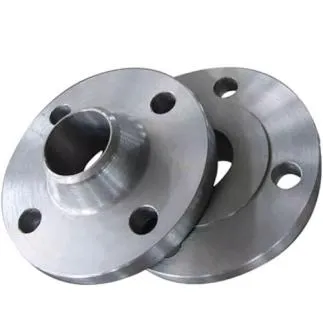-
Cangzhou Yulong Steel Co., Ltd.
-
Phone:
+86 13303177267 -
Email:
admin@ylsteelfittings.com
- English
- Arabic
- Italian
- Spanish
- Portuguese
- German
- kazakh
- Persian
- Greek
- French
- Russian
- Polish
- Thai
- Indonesian
- Vietnamese
- Zulu
- Korean
- Uzbek
- Hindi
- Serbian
- Malay
- Ukrainian
- Gujarati
- Haitian Creole
- hausa
- hawaiian
- Hebrew
- Miao
- Hungarian
- Icelandic
- igbo
- irish
- Japanese
- Javanese
- Kannada
- Khmer
- Rwandese
- Afrikaans
- Albanian
- Amharic
- Armenian
- Azerbaijani
- Basque
- Belarusian
- Bengali
- Bosnian
- Bulgarian
- Catalan
- Cebuano
- China
- China (Taiwan)
- Corsican
- Croatian
- Czech
- Danish
- Esperanto
- Estonian
- Finnish
- Frisian
- Galician
- Georgian
- Kurdish
- Kyrgyz
- Lao
- Latin
- Latvian
- Lithuanian
- Luxembourgish
- Macedonian
- Malgashi
- Malayalam
- Maltese
- Maori
- Marathi
- Mongolian
- Myanmar
- Nepali
- Norwegian
- Norwegian
- Occitan
- Pashto
- Dutch
- Punjabi
- Romanian
- Samoan
- Scottish Gaelic
- Sesotho
- Shona
- Sindhi
- Sinhala
- Slovak
- Slovenian
- Somali
- Sundanese
- Swahili
- Swedish
- Tagalog
- Tajik
- Tamil
- Tatar
- Telugu
- Turkish
- Turkmen
- Urdu
- Uighur
- Welsh
- Bantu
- Yiddish
- Yoruba

Dec . 30, 2024 20:35 Back to list
bending rigid metal conduit
Understanding Bending Rigid Metal Conduit (RMC)
Rigid Metal Conduit (RMC) is a widely used type of electrical conduit that provides a robust and reliable pathway for electrical wiring. Made from thick-walled galvanized steel or aluminum, RMC offers protection against harsh environmental conditions, physical damage, and corrosion. A critical aspect of working with RMC is the process of bending it to navigate around obstacles and fit within installation configurations. This article explores the importance of bending RMC, techniques, tools, and considerations for professionals and DIY enthusiasts alike.
Why Bending RMC Is Important
Bending RMC is essential for several reasons. First, in many wiring installations, straight runs of conduit are impractical due to structural barriers, equipment placement, or aesthetic considerations. Bending allows for a customized conduit path that fits the specific requirements of a project. Secondly, it helps maintain the integrity of the wiring protected within the conduit by minimizing the risk of mechanical stress and damage.
Techniques for Bending RMC
There are various methods to accomplish the bending of RMC, with hand-bending and machine-bending being the two primary approaches.
1. Hand Bending Hand bending is a common technique that can be carried out on-site with the appropriate tools. The following steps outline the hand-bending process
- Gather Tools The primary tool required is a conduit bender, which is a specialized piece of equipment that helps create bends in the conduit. Additionally, you will need a measuring tape, a marker, and a level.
- Measure and Mark Determine where the bend is required and mark the conduit accordingly. Accurate measurements are crucial to ensure that the conduit fits correctly and maintains alignment with the overall installation.
- Position the Conduit Place the conduit into the bender. Align the marked point with the arrow or indicator on the bender, which typically indicates where the bend will occur.
- Bend the Conduit With your foot securely positioned on the bender's foot pedal, apply pressure to the handle to begin bending. It’s essential to apply an even force to achieve a smooth and consistent bend.
bending rigid metal conduit

- Check the Angle After the bend is complete, check the angle using a level or protractor. The typical bend angles are 30, 45, or 90 degrees, depending on the requirements of the installation.
2. Machine Bending For larger projects or when precision is paramount, machine bending may be employed. This method utilizes hydraulic or electric bending machines to produce consistent and accurate bends. Machine bending is particularly advantageous for projects requiring multiple bends with the same specifications, such as in commercial applications.
Considerations When Bending RMC
When bending rigid metal conduit, several factors must be taken into account to ensure effective and safe installation.
- Bend Radius The bend radius should be at least ten times the conduit diameter to prevent kinking or damaging the conduit. Adhering to this guideline helps maintain the integrity of the conduit and the wiring inside it.
- Wall Thickness RMC comes in various wall thicknesses, which can affect the bending process. Thicker walls are typically more difficult to bend, and different techniques or tools may be required.
- Local Codes Electrical codes vary by region, so it's crucial to be familiar with local regulations regarding conduit bending and installation. Non-compliance can result in safety hazards and code violations.
- Professional Training If you are inexperienced with bending RMC or lack proper equipment, consider seeking assistance from a qualified electrician. Proper training and tools are essential for achieving safe and effective results.
Conclusion
Bending Rigid Metal Conduit is a vital skill for electrical installations that demand adaptability and precision. By understanding the techniques, tools, and considerations involved in this process, professionals and DIY enthusiasts can ensure a safe and efficient electrical pathway that meets the project’s requirements. Whether hand-bending on-site or employing machine bending for larger installations, proper execution of this task is crucial for the overall durability and effectiveness of electrical systems.
Latest news
-
ANSI 150P SS304 SO FLANGE
NewsFeb.14,2025
-
ASTM A333GR6 STEEL PIPE
NewsJan.20,2025
-
ANSI B16.5 WELDING NECK FLANGE
NewsJan.15,2026
-
ANSI B16.5 SLIP-ON FLANGE
NewsApr.19,2024
-
SABS 1123 FLANGE
NewsJan.15,2025
-
DIN86044 PLATE FLANGE
NewsApr.19,2024
-
DIN2527 BLIND FLANGE
NewsApr.12,2024
-
JIS B2311 Butt-Welding Fittings LR/SR 45°/90° /180°Seamless/Weld
NewsApr.23,2024











